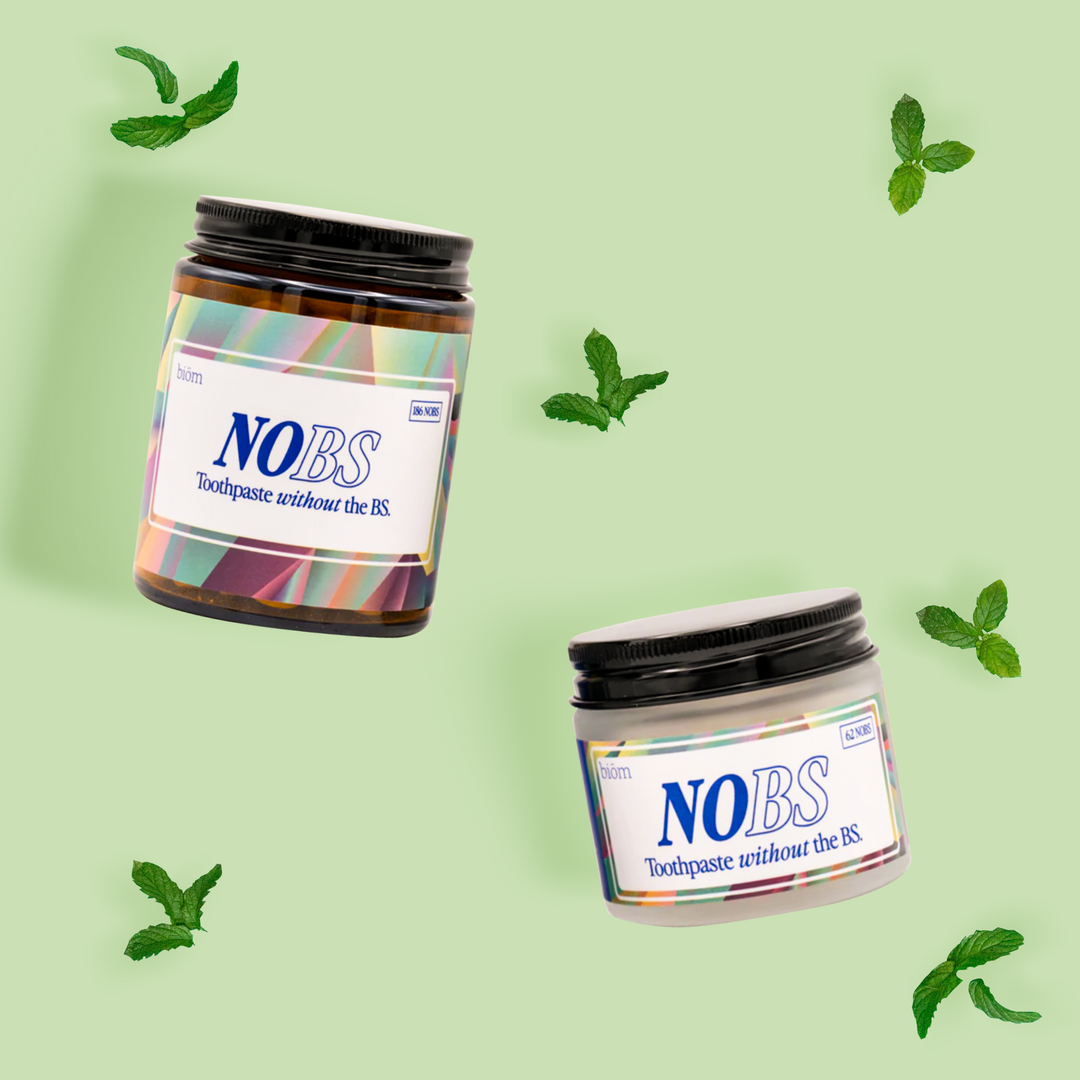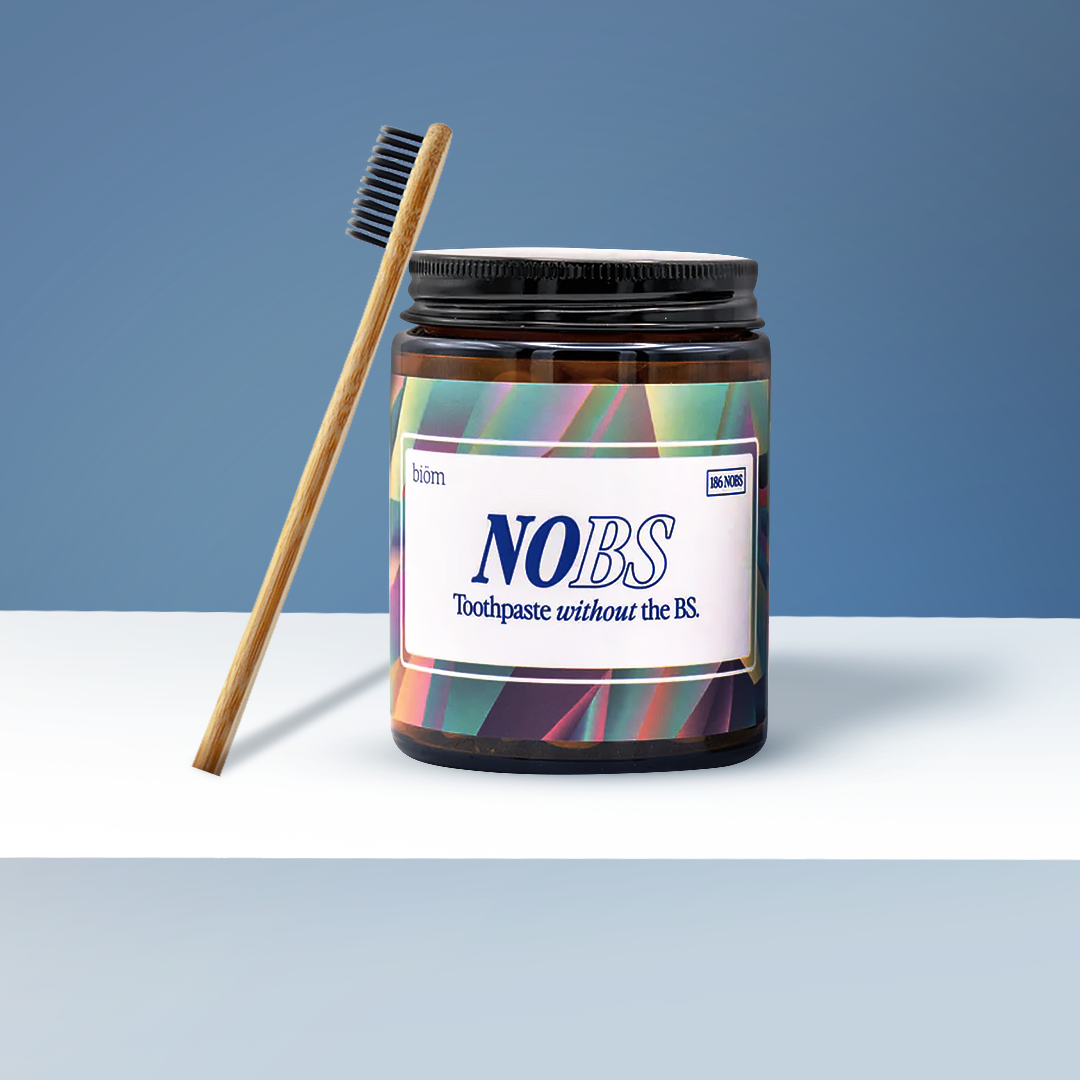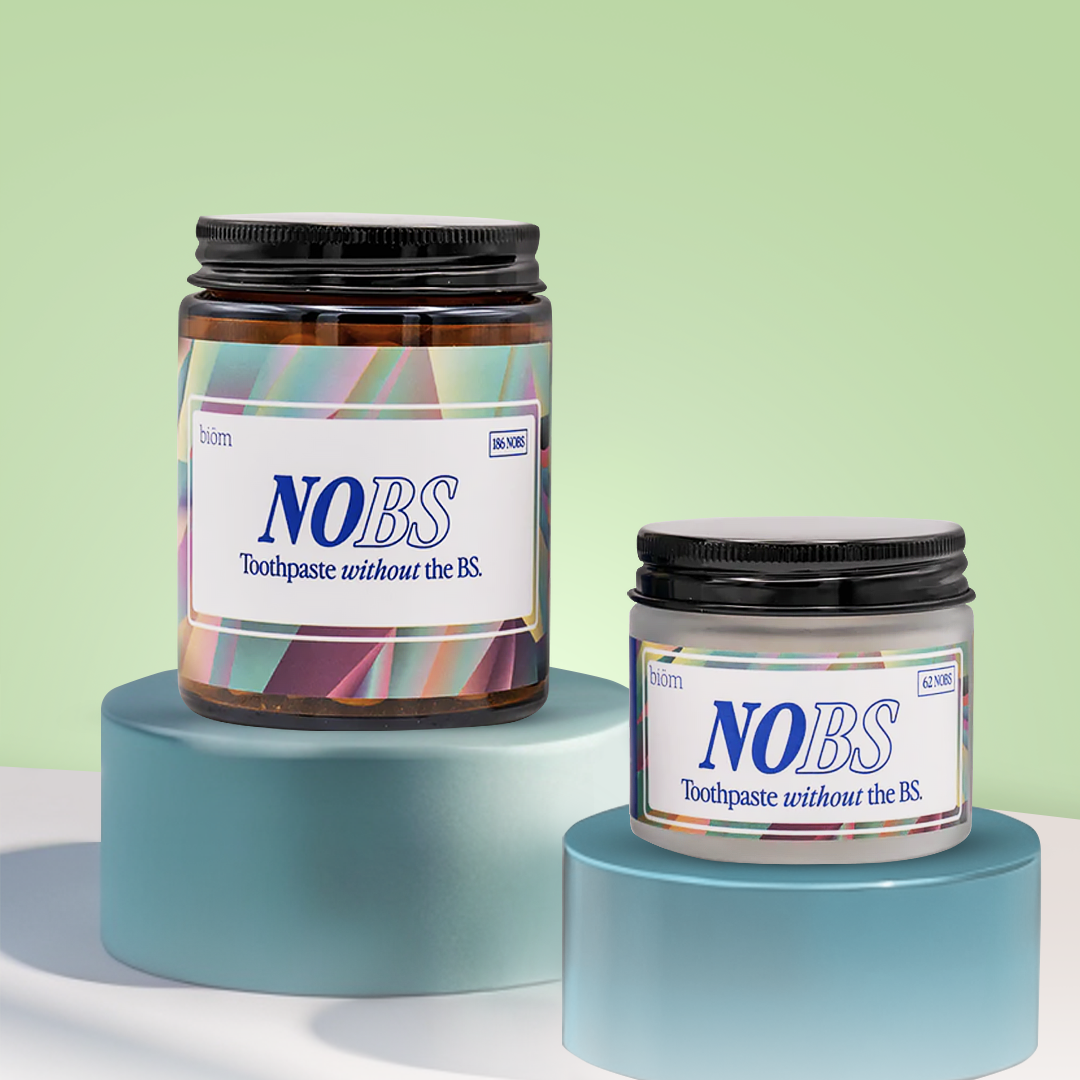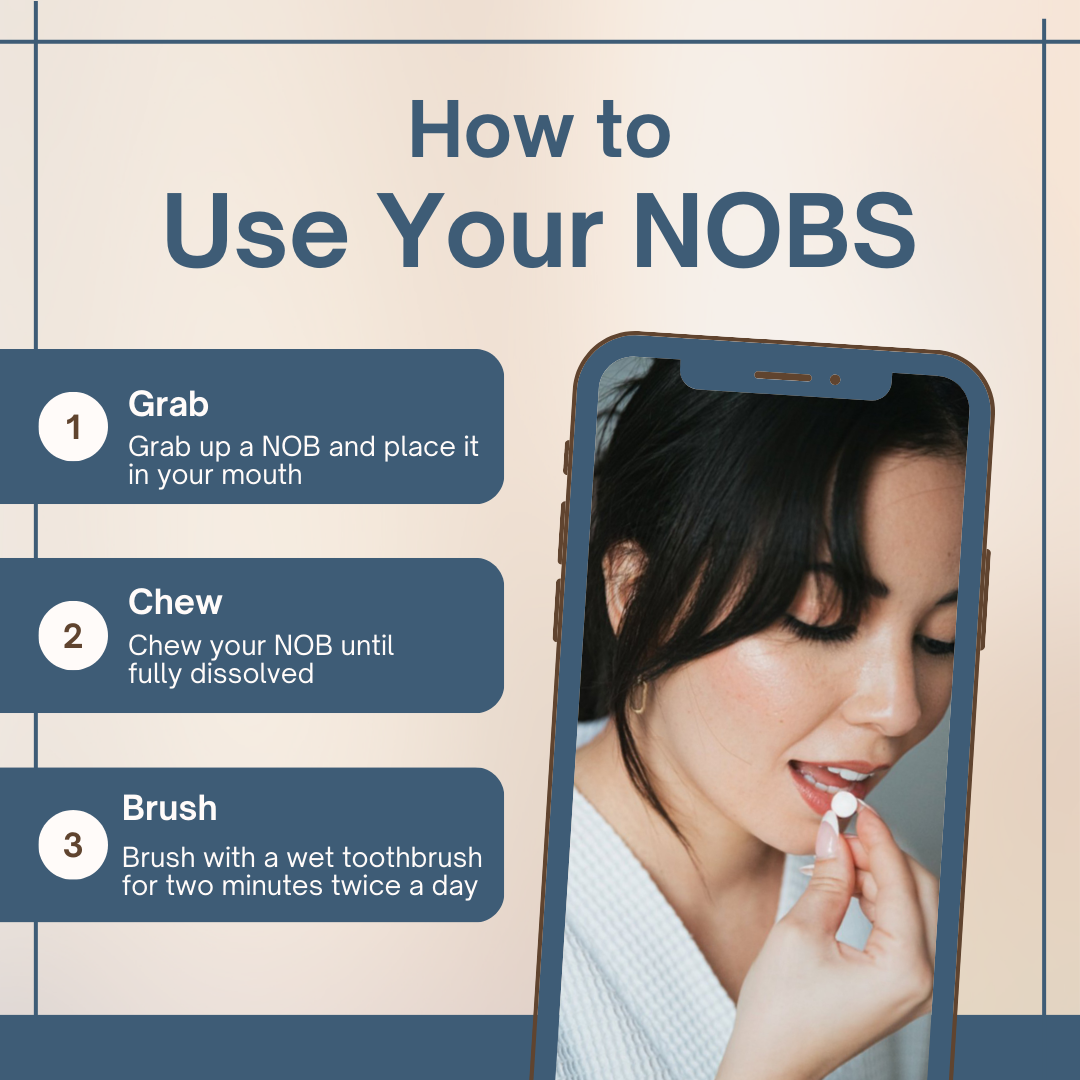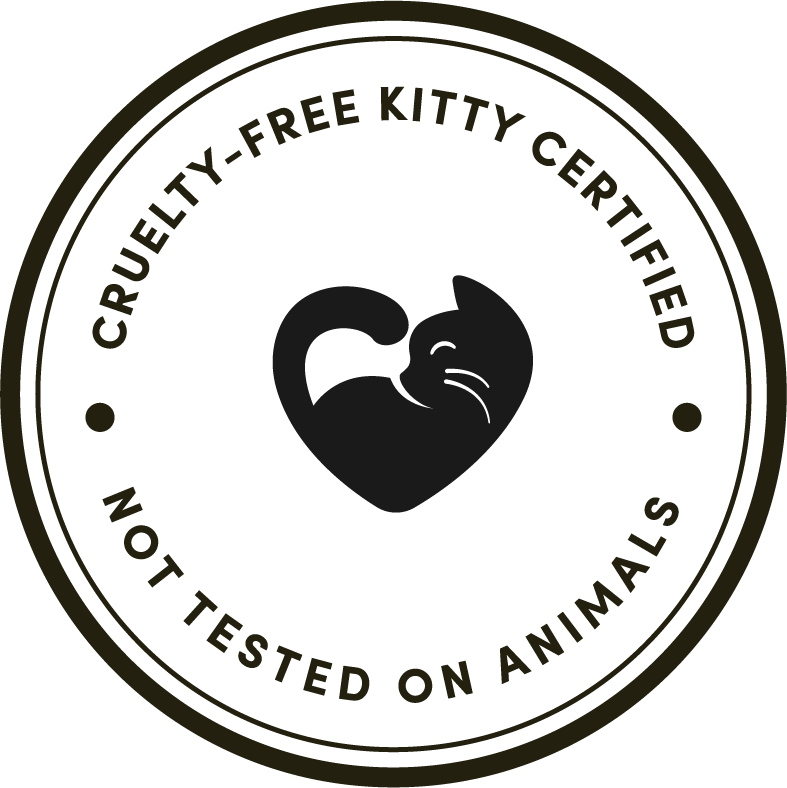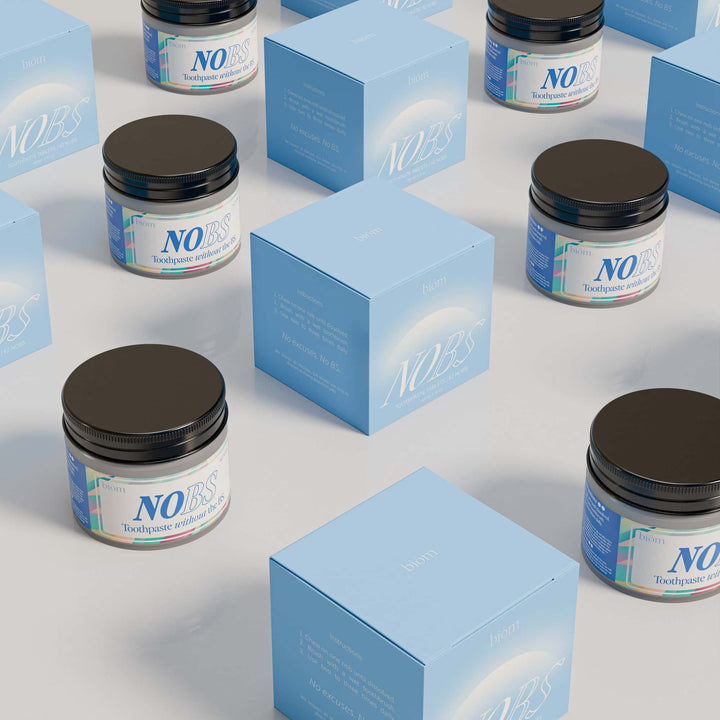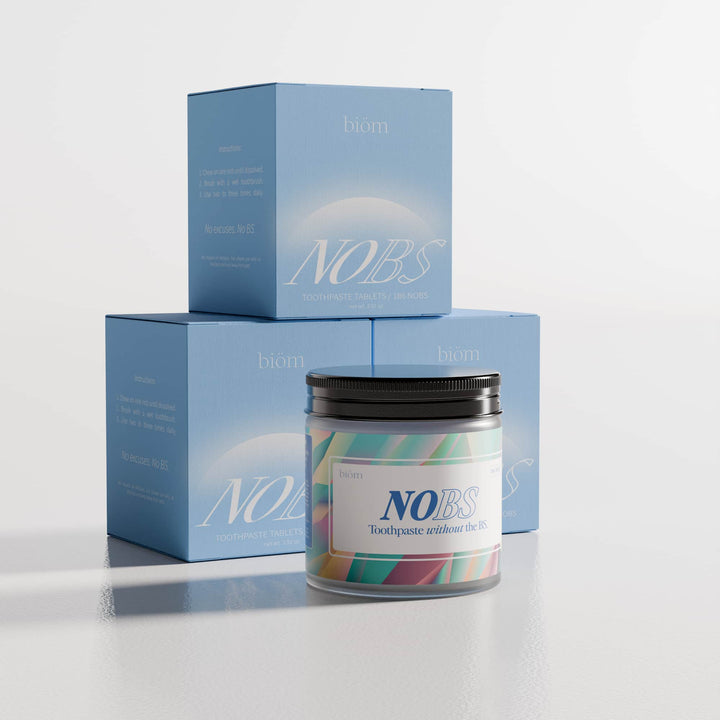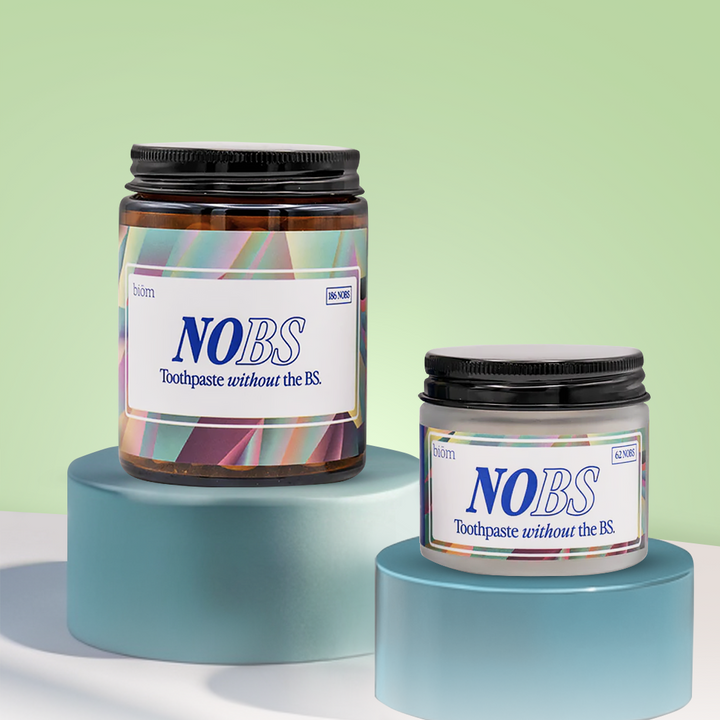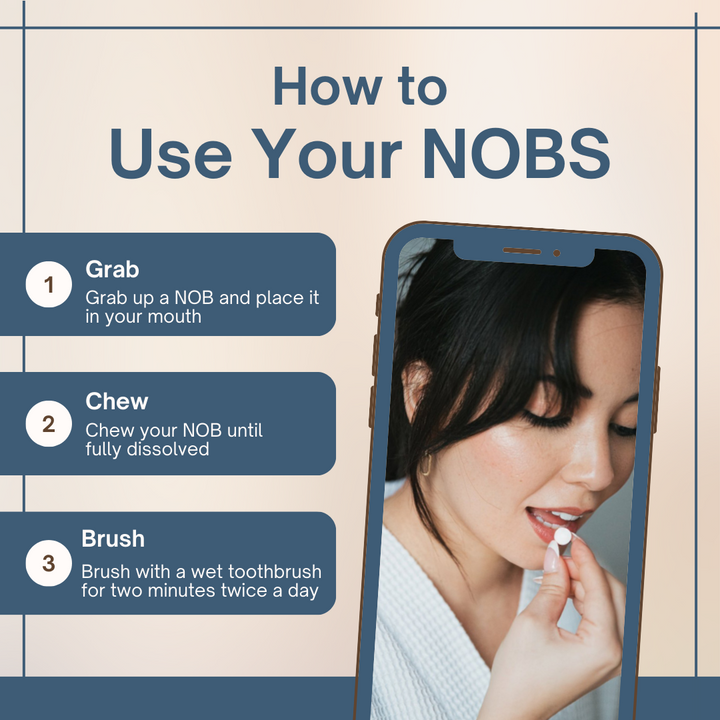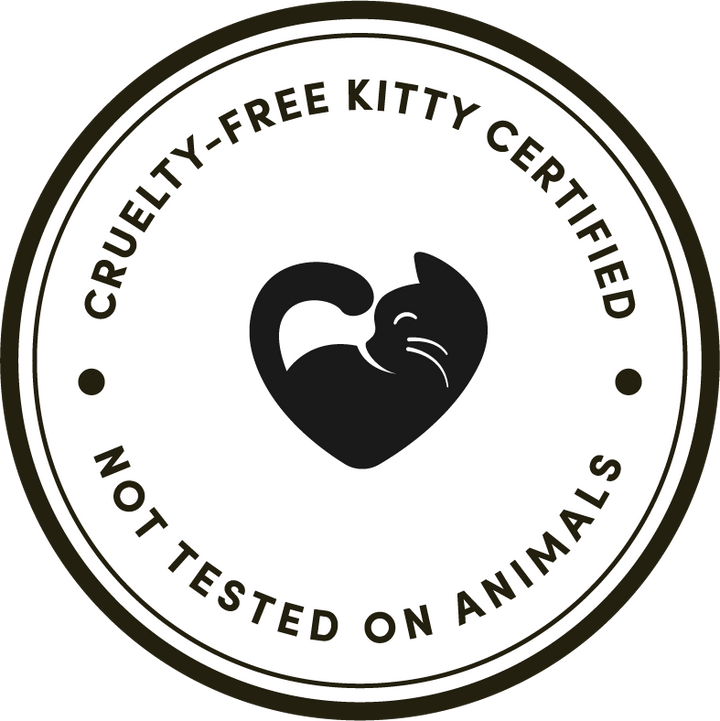Side Effects of Oil Pulling
While oil pulling is generally considered safe and can be a beneficial addition to your daily oral care routine, there are a few potential side effects you should be aware of.
For example, one of the most common issues is the risk of lipoid pneumonia, which can occur if you accidentally inhale the oil into your lungs. This is a rare but serious condition, so it's important to swish the oil gently and avoid deep breaths through your mouth while oil pulling.
Additionally, some people experience jaw soreness or muscle fatigue from the prolonged swishing action, especially if they're not used to it or if they have existing TMJ (temporomandibular joint) issues.
To minimize discomfort, you can consider starting with shorter sessions and gradually increasing the duration as your jaw muscles get stronger.
Another potential side effect is gastrointestinal discomfort, including nausea or diarrhea, if you accidentally swallow the oil.
Also, be mindful of the type of oil you choose - individuals with allergies to coconut, sesame, or sunflower oil should understandably choose an alternative to avoid allergic reactions.
Despite these potential side effects, many people find oil pulling to be a valuable part of their dental care regimen. In this article, I'll explain everything you need to know about oil pulling side effects and how to mitigate them.
What is oil pulling?

Oil pulling is a traditional Ayurvedic practice for improving oral hygiene and for spiritual benefits.
It involves swishing oil in your mouth for about 20 minutes to remove bacteria and dislodge buildup between your teeth. Back then, this process was used to treat bad breath and gum disease and, while less common now, continues to be practiced today for similar benefits.
While oil pulling was originally conducted with sesame and sunflower oil, virgin coconut oil is more common now. Any oil, including sunflower oil or olive oil, can be used for oil-pulling therapy, but coconut oil has been popularized due to its high lauric acid content and pleasant taste.
Just remember, to maximize the oral health benefits of oil pulling, we recommend brushing with toothpaste tablets, flossing with expandable floss, and using a tongue scraper daily.
Where does oil pulling come from?
Oil pulling originates from Ayurveda, an ancient system of medicine that has been practiced in India for thousands of years. This traditional health practice is mentioned in the Charaka Samhita, one of the key texts of the Ayurvedic tradition, where it is referred to as "Kavala" or "Gandusha."
Ayurveda emphasizes balance in bodily systems and uses diet, herbal treatment, and yogic breathing to maintain or improve health. Oil pulling is believed to promote oral hygiene, balance the doshas (body energies), and improve overall health according to Ayurvedic principles.
While oil pulling is an ancient practice with many practitioners, please note that the American dental Association does not endorse it.
How does oil pulling work?

Oil pulling works by dislodging harmful bacteria from between your teeth before it has a chance to organize into plaque.
Essentially, the oil helps emulsify the bacteria and debris in your mouth, allowing it to be spit out after ~20 minutes. Clinical and diagnostic research suggests that this practice supports a healthy oral microbiome.
That being said, it takes about 20 minutes for oil pulling to have a significant impact on your oral hygiene. Therefore, it is one of the more labor-intensive oral health practices and may not fit into your daily overall health routine.
So, is oil pulling safe?
Yes, oil pulling is generally considered safe for most people when performed correctly. At a high level, oil pulling involves swishing edible oil in your mouth for a period, then spitting it out, which poses little risk if you're using high-quality, organic oils like coconut or olive oil.
Just be aware that it's important not to swallow the oil you use for pulling because it contains bacteria pulled from your mouth. Otherwise, swallowing the oil can lead to stomach discomfort.
Further, if you have dental restorations, such as fillings or crowns, there's a small chance that the swishing action could dislodge them if they are already loose or weakened. While this is rare, it's something to consider and possibly discuss with your dentist.
Main Side Effects of Oil Pulling
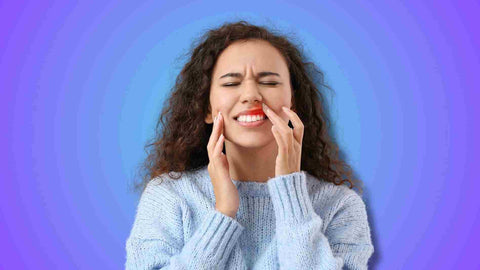
Oil pulling is generally considered safe although it may lead to some side effects in certain individuals.
These side effects can include nausea, upset stomach, or an unpleasant taste in the mouth, especially if you do not spit out the oil properly after swishing. Some people may also experience jaw fatigue or soreness from the prolonged swishing motion required when they practice oil pulling.
Additionally, there have been rare reports of lipoid pneumonia, a condition caused by inhaling small amounts of oil into the lungs, although this risk is extremely low when oil pulling is done correctly.
Let's walk through some of the oil pulling side effects in greater detail.
Nausea
Swallowing oil during oil pulling can lead to feelings of nausea, particularly if you accidentally ingest a significant amount. This sensation may occur due to the texture or taste of the oil or just from your stomach's reaction to the oil.
To prevent any discomfort, it's crucial to spit out the oil thoroughly after swishing. Further, you can start by swishing with a small amount of oil before gradually progressing to a larger amount of oil and a longer duration of oil pulling. Finally, you can choose to start with a lighter oil that has a milder taste like sunflower oil.
Upset Stomach
Along with nausea, ingesting oil during oil pulling may cause an upset stomach for some people. This discomfort can manifest as abdominal pain, bloating, or indigestion.
To prevent this from happening, make sure that you fully spit out all of the oil after oil pulling and do your best to avoid swallowing it. You can also rinse your mouth out thoroughly with water after oil pulling to remove any residual oil that may otherwise cause stomach discomfort.
Jaw Fatigue or Soreness
Unfortunately, the repetitive swishing motion required during oil pulling can lead to jaw fatigue or soreness, especially if you perform it for an extended period. This discomfort may arise from overuse of the jaw muscles and typically resolves with rest.
Taking breaks or reducing the duration of oil pulling sessions can help alleviate this issue. Additionally, you can try gently massaging the jaw muscles before and after oil pulling to help prevent fatigue and soreness.
Lipoid Pneumonia
In rare cases, inhaling small amounts of oil into the lungs during oil pulling may lead to lipoid pneumonia, a type of pneumonia caused by lipid or oil aspiration. While the risk is minimal when oil pulling is performed correctly, it's essential to be cautious and avoid inhaling the oil.
To minimize the risk of lipoid pneumonia, you should ensure you're using the proper technique for oil pulling, which involves swishing the oil around your mouth and then spitting it out, rather than inhaling or swallowing it.
Allergic Reactions
Individuals with allergies to certain oils, such as coconut or sesame oil commonly used for oil pulling, may experience allergic reactions. Symptoms can include itching, rash, or swelling of the mouth or throat. If this sounds like you, make sure to choose an oil that you tolerate well and discontinue use if any allergic symptoms occur.
Benefits of Oil Pulling

Proponents of oil pulling with coconut oil (or any other oil) suggest that it has benefits that include:
-
Reducing oral bacteria associated with cavities and gingivitis
-
Fighting plaque induced gingivitis
-
Whitening teeth
-
Eliminating bad breath
-
Preventing periodontal disease progression
-
Lowering risk of tooth decay
These potential benefits largely come from oil pulling’s presumed ability to reduce bacterial load in your mouth.
However, there is no academic consensus on the benefits of oil pulling due to the lack of clinical research.
Bacteria
There is some evidence that oil pulling may reduce the number of bacterial colonies living in your mouth.
However, this is a newly evolving field of research and more evidence is required to fully understand the impact.
Bad Breath
By reducing the number of bacterial colonies in your mouth, oil pulling may have some impact to reduce the incidence of halitosis.
Plaque Buildup
Oil pulling is an effective treatment against plaque. In fact, one study found that "both coconut oil and sesame oil can be used for oil-pulling therapy with the aim of plaque regrowth inhibition".
Interestingly, this study also found that this same mechanism had a positive impact on tooth staining as well.
Gingivitis and Inflammation
Preliminary evidence shows that oil pulling may help fight gingivitis by reducing your plaque index. However, it is unclear how significant these results are and whether they can be replicated.
Does oil pulling whiten teeth?
No, oil pulling does not whiten teeth. Some people claim that oil pulling whitens their teeth, but the scientific evidence supporting this specific benefit is limited.
Now, oil pulling may indirectly lead to a brighter smile by reducing plaque buildup which can otherwise make your teeth appear. However, it doesn't bleach your teeth like professional whitening treatments or whitening strips do.
These products typically use active ingredients like hydrogen peroxide or carbide peroxide that penetrate your enamel to remove deep stains, a process that oil pulling cannot replicate.
If you're looking for a natural method to enhance your oral hygiene and possibly brighten your smile, consider using nano hydroxyapatite toothpaste because hydroxyapatite has been proven to whiten teeth.
How to do Oil Pulling Therapy
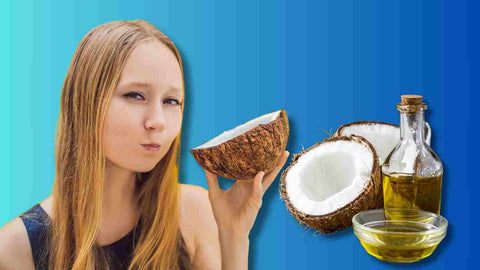
To oil pull effectively, follow these steps:
-
First choose your oil: Select a high-quality, edible oil such as coconut oil, sesame oil, or sunflower oil. Coconut oil pulling is popular due to its pleasant taste and potential antibacterial properties, but oil pulling with coconut oil isn't the end-all-be-all of this practice.
-
Measure the oil: Take about 1-2 tablespoons of oil and put it in your mouth.
-
Swish the oil: Swish the oil around in your mouth for about 15-20 minutes. Be sure to pull the oil through your teeth and around your gums. Avoid gargling or swallowing the oil.
-
Spit out the oil: After 15-20 minutes, spit the oil out into a trash can or tissue. Don't spit it into the sink as it could solidify and clog your drain over time.
-
Rinse your mouth: Rinse your mouth thoroughly with warm water or salt water to remove any remaining oil residue.
-
Don't forget to brush your teeth: To avoid improper, poor oral hygiene, be sure to follow up with your regular oral hygiene routine, including brushing with toothpaste tablets and flossing.
Repeat this process daily or several times a week for best results. Most people practice oil pulling in the morning before eating instead of at night.
In summary, oil pulling is an effective, easy-to-implement practice that can have great benefits for your dental health.
Why do most people use coconut oil for oil pulling?
Most people use coconut oil to oil pull due to its unique benefits, pleasant taste, and accessibility. You see, coconut oil is rich in lauric acid, a medium-chain fatty acid known for its antimicrobial properties, which can help reduce harmful bacteria in our mouths.
This includes Streptococcus mutans which is one of the primary bacteria responsible for tooth decay and gum disease.
Additionally, coconut oil has a somewhat solid state at room temperature and melts in your mouth which makes it an easy oil to use. Of course, it also has a mild, sweet flavor which is less likely to induce nausea than other oils.
Further, coconut oil is popular in various health and wellness communities which contributes to its widespread use in coconut oil pulling.
All of this said, you don't necessarily have to use coconut oil for oil pulling. The most important part is to pick out a high-quality oil to ensure you're getting the most benefits without any unnecessary additives.
Do dentists approve of coconut oil pulling
Generally, most dentists' opinions on coconut oil pulling vary, with some recognizing its potential benefits as part of an oral hygiene routine, while others caution against viewing it as a substitute for traditional dental care practices.
Some dentists agree that oil pulling, especially when done with coconut oil, can help reduce harmful bacteria in our mouths and potentially decrease plaque and lead to fresher breath.
However, most dental professionals emphasize that oil pulling should not replace your regular oral care routine including brushing with nano hydroxyapatite toothpaste, flossing daily with expandable floss, tongue scraping, and using alcohol free mouthwash.
Do you still have to brush your teeth if you do oil pulling?
Yes, you absolutely need to continue brushing your teeth even if you do oil pulling. Since it can remove harmful bacteria and reduce plaque buildup, oil pulling can be beneficial to add into your oral routine, but it should not replace brushing and flossing.
Tooth brushing twice a day with nano hydroxyapatite is essential to:
-
break up biofilm
-
remove bacteria and plaque
-
remineralize teeth
-
and fight tooth decay.
Further, using expandable floss is perfect for removing food and bacteria from the hard-to-reach places in your mouth such as along the gumline and between your teeth.
Instead of thinking of oil pulling as a replacement for brushing your teeth, think of it more as a supplement to our overall oral care routine.
Do you still have to see your dentist if you do oil pulling?
Yes, you still have to see your dentist regularly even if you do oil pulling. Even though oil pulling therapy can be beneficial by reducing bacteria and improving your oral health, it is not a replacement for professional dental care.
By regularly seeing your dentist, they will be able to identify and treat issues like cavities and gum disease that cannot be addressing through oil pulling along. Further, your dentist can also provide professional advice on your oral health and the effectiveness of oil pulling.
Who should not do oil pulling?
Oil pulling is not recommended for people with certain conditions.
Those with oil allergies, like coconut or sesame, should avoid it to prevent allergic reactions.
Individuals with trouble swallowing, gag reflex issues, or loose dental work might find it uncomfortable or unsafe. Pregnant women should also consult a doctor before trying it.
Instead of oil pulling, it's better to focus on proven oral hygiene methods for faster results.
Use alcohol-free mouthwash, nano-hydroxyapatite toothpaste, and floss daily to maintain healthy teeth and gums.
These alternatives are more effective and safer for improving oral health. Always consult a dentist for the best advice.
Other Tips for Great Oral Health

In addition to incorporating tongue scraping into your oral care routine, there are several other tips you can follow to improve your oral health.
Brush With Nano Hydroxyapatite Toothpaste
Brushing with nano hydroxyapatite toothpaste is beneficial for strengthening tooth enamel, remineralization, and preventing and reversing tooth decay.
Nano hydroxyapatite is a natural mineral that makes up the majority of our tooth structure and has been shown to remineralize enamel, making it more resistant to acid attacks from bacteria.
By using toothpaste with nano hydroxyapatite, you can help protect your teeth from decay and maintain a healthy smile.
Use Expanding Floss Daily
Using expanding floss daily is essential for removing plaque and food particles from between your teeth and along the gumline. Expanding floss is designed to expand when it comes into contact with saliva, allowing it to clean more effectively between tight spaces and beneath the gumline.
By flossing daily, you can reduce your risk of demineralization and tooth decay, gum issues, and bad breath.
Avoid Smoking and Consuming Tobacco Products
Avoiding smoking and consuming tobacco products is crucial for maintaining good oral health. Tobacco use can lead to a wide range of dental problems, including stained teeth, bad breath, gum disease, and oral cancer.
Quitting smoking and avoiding other tobacco products can significantly improve your oral health and reduce your risk of developing serious dental issues in the future.
Swap Out Your Toothbrush Every 3 Months
Swapping out your toothbrush every three months is important for maintaining effective oral hygiene. Over time, toothbrush bristles can become worn and frayed, making them less effective at removing plaque and debris from your teeth and gums.
By replacing your toothbrush regularly, you ensure that you're using a tool that can clean your teeth effectively and help prevent oral health problems down the line.
Frequently Asked Questions
Are there negative effects of oil pulling?
While oil pulling may offer potential benefits like reducing plaque and improving gum health, there are drawbacks to consider. These include the lack of scientific evidence supporting its efficacy, the necessity of maintaining traditional oral care practices like brushing and flossing, the time commitment involved in oil pulling, potential discomfort, and the risk of accidental inhalation, particularly for young children or those with difficulty controlling mouth movements. Thus, it's crucial to view oil pulling as a supplementary practice alongside established oral hygiene routines and to consult with a dentist for personalized advice.
Can you brush your teeth before oil pulling?
No, you should brush your teeth after oil pulling to ensure that any remaining oil residue is removed and to maintain overall oral hygiene. Brushing after oil pulling helps eliminate bacteria and plaque effectively. Remember to rinse your mouth thoroughly with water before brushing to remove any lingering oil. This sequence helps maximize the benefits of both oil pulling and brushing.
What should you not do after oil pulling?
After oil pulling, you should avoid certain activities to maximize its effectiveness and prevent potential adverse effects. Refrain from swallowing the oil, as it may contain harmful bacteria and toxins removed from your mouth during the process. Additionally, avoid eating or drinking immediately after oil pulling to allow your mouth to continue detoxifying and benefit from the oil's antimicrobial properties. Some individuals may experience temporary sensitivity, so avoid aggressive brushing or using harsh mouthwashes immediately afterward. Instead, rinse your mouth thoroughly with water and follow your regular oral hygiene routine after some time has passed.
What oil should you use for oil pulling?
For oil pulling, you can use various types of edible oils, with coconut oil and sesame oil being the most commonly used. These oils are believed to have antimicrobial properties and are often preferred for their mild taste. However, other oils such as sunflower oil or olive oil can also be used for oil pulling. It's essential to choose a high-quality, edible oil and ensure that it is safe for oral use.
Is it good to do oil pulling everyday?
The frequency of oil pulling depends on individual preferences and needs. While some people find benefits in doing oil pulling daily, others may prefer to do it less frequently. It's essential to listen to your body and adjust the frequency accordingly. Consistency is key in experiencing potential benefits, but overdoing it may lead to oral discomfort or irritation. Consulting with a dentist or healthcare professional can help determine the most suitable frequency for you based on your oral health and overall well-being.
Who should avoid oil pulling?
Oil pulling, while generally safe for many individuals, may not be suitable for certain groups. Children who may have difficulty spitting instead of swallowing the oil should avoid oil pulling to prevent ingestion. Additionally, individuals experiencing jaw fatigue or temporomandibular joint (TMJ) issues may find the prolonged swishing motion uncomfortable or exacerbating. Those with allergies to specific oils should also steer clear; however, they could explore alternative oils that are better suited to their sensitivities. It's crucial for these individuals to consult with a healthcare professional to determine if oil pulling is appropriate for them.
Can you overdo oil pulling?
Yes, it's possible to overdo oil pulling. While it's generally safe when practiced in moderation, excessively long sessions or frequent oil pulling throughout the day may lead to unintended side effects such as throat irritation or upset stomach. It's recommended to start with shorter sessions (around 10-15 minutes) and gradually increase the duration if desired, but it's important to listen to your body and stop if you experience any discomfort. Like any oral hygiene practice, moderation is key to avoiding potential adverse effects.
What are the side effects of oil pulling?
The side effects of oil pulling include the lack of scientific evidence supporting its efficacy, the necessity of maintaining traditional oral care practices like brushing and flossing, the time commitment involved in oil pulling, potential discomfort, and the risk of accidental inhalation, particularly for young children or those with difficulty controlling mouth movements. Thus, it's crucial to view oil pulling as a supplementary practice alongside established oral hygiene routines and to consult with a dentist for personalized advice.
Can you brush your teeth after oil pulling?
Yes, you can brush your teeth after oil pulling to ensure that any remaining oil residue is removed and to maintain overall oral hygiene. Brushing after oil pulling helps eliminate bacteria and plaque effectively. Remember to rinse your mouth thoroughly with water before brushing to remove any lingering oil. This sequence helps maximize the benefits of both oil pulling and brushing.
Does oil pulling help a sore throat?
Oil pulling may offer some temporary relief for a sore throat by reducing bacteria in the mouth, but it is not a proven treatment. While it can help improve oral hygiene, it’s best to combine it with other remedies like warm saltwater gargles, hydration, and rest for soothing a sore throat. If the sore throat persists, consulting a healthcare provider is recommended.
Can oil pulling cause cold symptoms?
Oil pulling itself is unlikely to cause cold symptoms, but some people may experience a detox-like effect, such as mild congestion or headaches, which are temporary. These reactions are not common and are usually attributed to the body eliminating toxins. If symptoms persist or worsen, it's best to stop and consult a healthcare provider.
Can oil pulling cause mucus in the throat?
Oil pulling may cause a temporary increase in mucus production in some individuals, as it stimulates salivary glands and may trigger a mild detoxification response. This is usually harmless and should subside as the body adjusts. If excessive mucus or discomfort persists, it’s best to stop oil pulling and consult a healthcare provider.
Why am I coughing after oil pulling?
Coughing after oil pulling can occur for a few reasons, including the irritation of the throat from excess saliva or accidentally inhaling the oil. In rare cases, individuals who inhale the oils during the process may develop lipoid pneumonia, which can present symptoms like a chronic cough, chest pain, and intermittent fever. If you experience persistent coughing or any concerning symptoms, it’s essential to seek medical attention.





